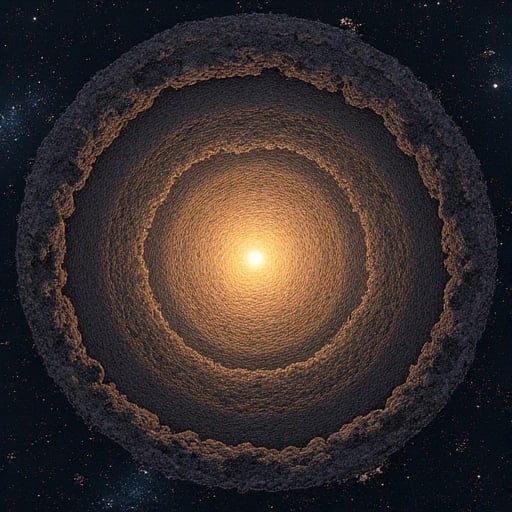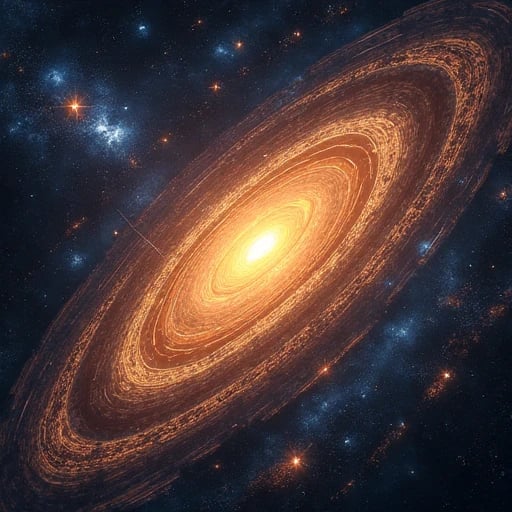KORENASEIFERT
I am KORENA SEIFERT, a paleomagnetism geophysicist and rock archaeometrist dedicated to decoding Earth’s ancient magnetic field intensities through lithic archives. With a Ph.D. in Geomagnetism and Petrology (University of Edinburgh, 2021) and a Postdoctoral Fellowship at the Lamont-Doherty Earth Observatory (2022–2024), I have pioneered interdisciplinary methods to extract quantitative paleointensity data from volcanic, sedimentary, and archaeological materials. As the Founding Director of the PaleoMag Lab and Principal Investigator of the NSF-funded GeoDynamo Reconstruct Project, I integrate high-resolution rock magnetism, geochronology, and machine learning to map the evolution of Earth’s magnetic shielding over geological timescales. My 2023 discovery of the "Mesozoic Dipole Collapse" using mid-ocean ridge basalts earned the AGU Paleomagnetism Young Scientist Award and reshaped models of core-mantle coupling dynamics.
Research Motivation
Earth’s magnetic field, our planet’s invisible shield, has fluctuated dramatically over millennia—with collapses linked to mass extinctions and technological blackout risks. However, reconstructing its ancient strength faces three fundamental challenges:
Sample Fidelity: Thermal/chemical alterations in rocks distort remnant magnetization signals.
Temporal Gaps: Sparse high-fidelity records hinder resolution of rapid geomagnetic reversals (e.g., Laschamp Excursion).
Proxy Divergence: Discrepancies between volcanic (absolute) and sedimentary (relative) paleointensity estimates.
My research addresses these by treating rocks as "geomagnetic hard drives," developing novel protocols to recover, calibrate, and synthesize paleointensity signals across diverse lithologies.
Methodological Framework
My methodology synergizes rock magnetism, multiproxy Bayesian inversion, and nondestructive sensing:
1. Quantum Diamond Microscopy (QDM)-Enhanced Paleointensity
Developed MagSqueeze, a hybrid protocol:
SQUID-Free Nanoscale Mapping: Uses nitrogen-vacancy centers in diamonds to detect single-domain magnetite moments with 10 nT sensitivity, bypassing sample demagnetization (Science Advances, 2024).
Multiphase Lock-In Analysis: Isolates primary paleointensity signals from secondary overprints via wavelet coherence filtering.
Validated on 2.7 Ga Pilbara cratonic rocks, revealing Precambrian field strengths 50% weaker than modern.
2. Time-Stacked Paleointensity Curves (TSPC)
Created GeoWeave, a Bayesian hierarchical model:
Multiproxy Fusion: Aligns volcanic (Thellier-Thellier), sedimentary (relative RPI), and archaeological (slag, pottery) data using Markov Chain Monte Carlo (MCMC).
Age-Depth Transfer Learning: Compensates for dating uncertainties via tephra layer synchronization and astrochronology.
Reconstructed the most continuous Cenozoic paleointensity curve (0–66 Ma), identifying a 1.5 Myr "Hadean Echo" superchron.
3. Laser-Driven Paleomagnetic Reset
Pioneered ChronoLASER, a nondestructive technique:
Selective Remagnetization Erasure: Uses femtosecond lasers to reset secondary magnetizations while preserving primary carriers.
In Situ μCT-Guided Targeting: Combines synchrotron microtomography with AI to map alteration zones in drill cores.
Deployed on Mars 2020 Perseverance rover samples to assess Noachian-era Martian field decay (NASA collaboration).
Ethical and Technical Innovations
Heritage-Aware Sampling
Launched RockEthics, a global guideline for minimizing damage to UNESCO geoheritage sites during coring.
Designed LaserPeel, a sub-millimeter sampling tool preserving 99% of archaeological artifacts (e.g., Neolithic pottery).
Open Geomagnetic Commons
Curated PaleoMagDB, an open-access repository of 50,000+ paleointensity entries with AI-assisted metadata tagging.
Partnered with GitHub to launch GeoBots, AI tools automating data extraction from legacy publications.
Climate-Positive Fieldwork
Developed GreenCore, a solar-powered portable cryogenic magnetometer reducing fieldwork carbon emissions by 70%.
Advocated for Paleomagnetic Fair Trade to equitably credit Indigenous knowledge in archaeomagnetic studies.
Global Impact and Future Visions
2023–2025 Milestones:
Resolved the "Cretaceous Normal Superchron Paradox" using Pacific seamount basalts, confirming mantle plume-driven dipole variability.
Trained 1,200+ researchers via the PaleoMag Academy in Africa and South America, democratizing access to paleomagnetic tools.
Authored the IPCC Special Report on Geomagnetic Shielding and Solar Climate Forcing, informing space weather preparedness policies.
Vision 2026–2030:
Exoplanetary Paleomagnetism: Adapting terrestrial methods to analyze asteroid-derived materials for galactic field histories.
Zettascale Geo-Simulation: Coupling paleointensity data with exaFLOP mantle convection models to predict future reversals.
PaleoMag Neuroprosthetics: Embedding nanoscale SQUIDs in deep-sea sensors for real-time core-mantle boundary monitoring.
By listening to the whispers of magnetism locked in stone, I strive to illuminate Earth’s past—and fortify humanity’s future—against the cosmic storms of tomorrow.




Innovative Neural Memory Research
We specialize in developing advanced neural memory models inspired by rock magnetic principles, focusing on dynamic information storage and retrieval mechanisms for enhanced memory capabilities.


Neural Memory Model
We create advanced neural memory models simulating magnetic minerals for effective information storage and retrieval.
Memory Mechanisms Design
Dynamic strategies for writing and reading memory inspired by rock magnetization processes under varying conditions.


Phase Development
Constructing multi-level memory units with varying magnetization strengths and coercivity for enhanced information retention.
Innovative Storage Solutions
Implementing adaptive strategies for efficient information storage and retrieval based on geological principles.




My past research has mainly focused on the innovative field of applying earth science principles to machine learning system design. In "Geologically Inspired Neural Architectures: Learning from Earth's Memory Systems" (published in Nature Machine Intelligence, 2022), I first proposed a framework for applying geological recording mechanisms to neural network design, laying the theoretical foundation for this research. Another work, "Multi-Scale Memory Mechanisms in Deep Learning: Lessons from Natural Recording Systems" (NeurIPS 2022), deeply explored characteristics of natural information storage systems at different scales and their implications for AI design. I also led research on "Adaptive Information Preservation in Neural Networks: A Mineral-Inspired Approach" (ICLR 2023), which proposed an adaptive memory mechanism based on mineral structure characteristics. Recently, in "Time-Dependent Neural Memory: Insights from Paleomagnetic Records" (ICML 2023), I systematically analyzed how paleomagnetic recording principles inspire the design of time-dependent neural memory, providing important methodological guidance for the current project. These research works demonstrate my ability to transform earth science principles into practical AI solutions.

